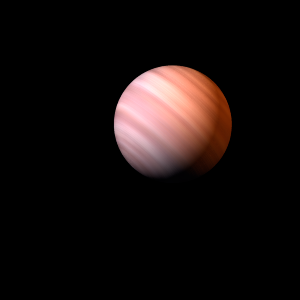|
|
Space Astro
|
Info for exoplanet "Mebupekyo Mi"
| Scientific (actual) data |
|---|
| Name | HD 166724 b |
| Planet status | Confirmed |
| Mass sini | 3.53 |
| Orbital period | 8100 |
| Semi major axis | 5.42 |
| Orbit eccentricity | 0.734 |
| Discovered | 2011 |
| Updated | 2012-11-30 |
| Omega | 202.3 |
| Tperi | 2453210 |
| Publication | Submitted to a professional journal |
| Detection type | Radial Velocity |
| Star name | HD 166724 |
| Right ascension | 273.5° |
| Declination | -42.58° |
| Mag v | 9.31 |
| Star distance | 42.3 |
| Star sp type | K0IV |
| Wikipedia article | HD 166724 b |
Back
| |
| Fictional info (?) |
|---|
| Suggested name | Mebupekyo Mi |
| Planet type | Cold planet |
| It is a cold planet planet with a mass one-thousandth that of HD 166724, but two-and-a-half times that of all the other planets in its solar system combined.
It has the densest atmosphere of the three cold planets, consisting of huge amounts of xenon.
The smooth Borealis basin in the northern hemisphere covers 18 percent of the planet and may be a giant impact feature.
Its north and south poles, therefore, lie where most other planets have their equators. |
| Atmosphere | Xenon | 47% |
| Formaldehyde | 32% |
| Helium | 14% |
| Nitrogen | 3% |
| Nitric oxide | 1.9% |
| Oxygen | 1.8% |
| Ammonium hydrosulfide (NH4SH) | 0.00028% |
| Water vapor | 2.0E-6% |
| Atmospheric pressure | 14 bar |
 |
| No known satellites |
| Google search for Mebupekyo mi |
|
Website by Joachim Michaelis
|
|
|
|